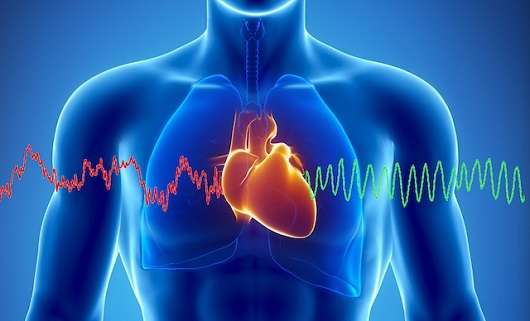Zinc at the heart of new study

Zinc plays an important role in regulating heartbeat, according to new research led by the University of St Andrews.
Scientists behind the study, published today by the Journal of Biological Chemistry, say it represents a 'paradigm shift' in our understanding of how the heart works.
Dr Samantha Pitt, who led the research in collaboration with Dr Richard Rainbow of the University of Leicester, hopes the work could lead to the development of potential new drug targets in the fight against heart failure.
Dr Pitt, a Royal Society of Edinburgh Biomedical Fellow at the University's School of Medicine, said: "We still have a lot to learn regarding the role of zinc in the heart but our latest work suggests that tight regulation of this metal is crucial in maintaining normal cardiac function.
"Our discovery provides a mechanistic explanation of how zinc plays a key role in regulating heart muscle contractility and how imbalances in zinc may contribute to diseases such as heart failure and fatal arrhythmias."
The research identifies a key role that zinc plays in regulating calcium movements in heart cells. This is important as excessive release of calcium is a major cause of heart failure and fatal arrhythmias.
In healthy individuals, calcium is released from intracellular stores through specialised gates called type-2 ryanodine receptors (RyR2) and this causes the heart to beat strongly.
By monitoring the opening of single RyR2 molecules and by studying calcium dynamics in individual heart cells, the researchers found that zinc plays a key role in controlling the release of calcium from intracellular stores by directly interacting with and modulating RyR2 function.
Unregulated zinc movements are linked with chronic heart failure and the study's data provide a plausible mechanistic explanation of how this may occur.
Dr Pitt continued: "The ability of zinc to modulate RyR2 channels in the absence of calcium represents a paradigm shift in our understanding of how RyR2 is activated when heart muscle contracts. Although just a first step, this kind of basic science research underpins our understanding of the pathophysiology of disease. By exploring new mechanisms involved in regulating intracellular calcium release in cardiac tissue we may uncover potential new drug targets in the fight against heart failure and fatal arrhythmias."
Dr Richard Rainbow, a Lecturer in Cardiovascular Cell Physiology at the University of Leicester, added: "It always amazes me that seemingly small changes in the concentration of an ion have such profound effects on cardiac cell function that, when in the context of the whole heart, would have severe consequences.
"Although these early findings are extremely exciting, there is still much work to be done to fully understand the processes involved. This exciting opportunity not only gives us new insights into the mechanisms of disease but also gives the potential to identify new drug targets not previously recognised."
More information: "Intracellular zinc modulates cardiac ryanodine receptor-mediated calcium release" J. Biol. Chem. jbc.M115.661280. First Published on June 3, 2015, DOI: 10.1074/jbc.M115.661280




















